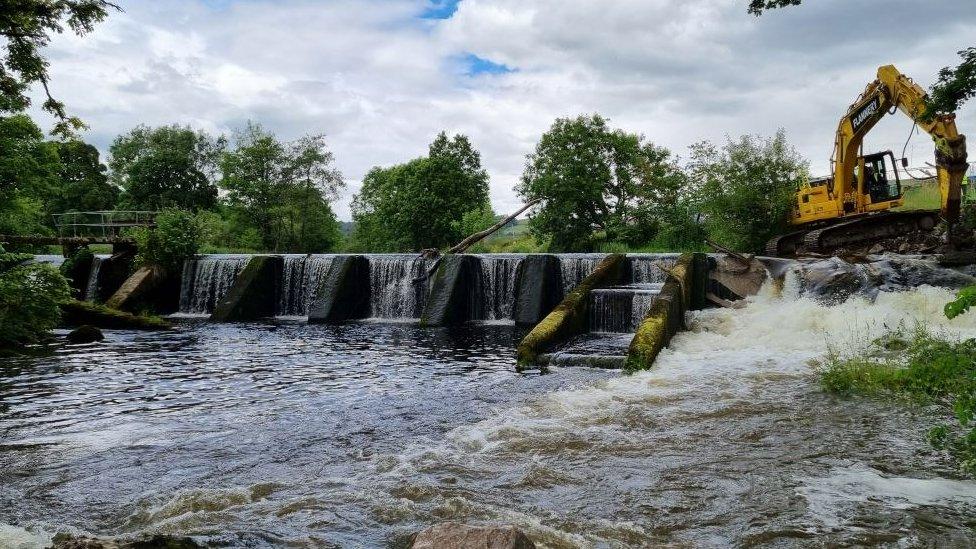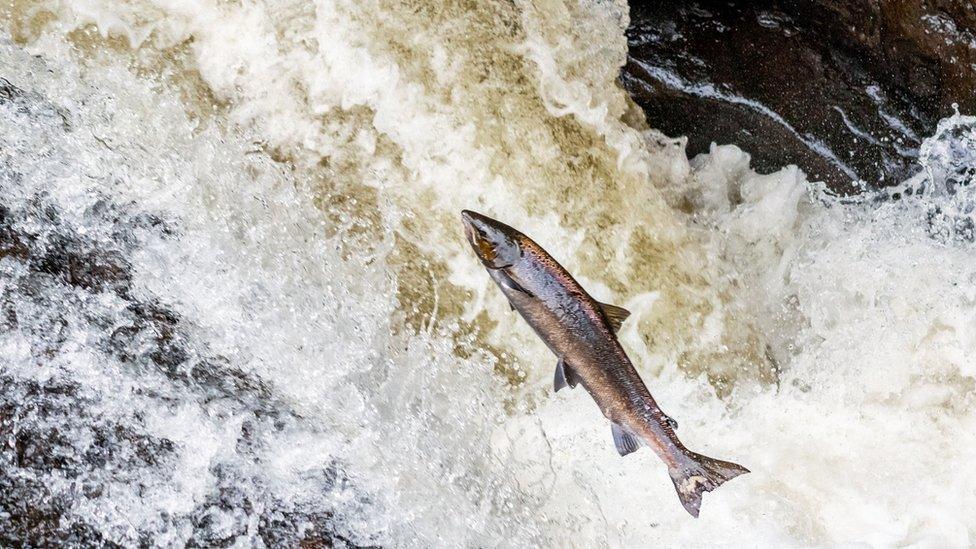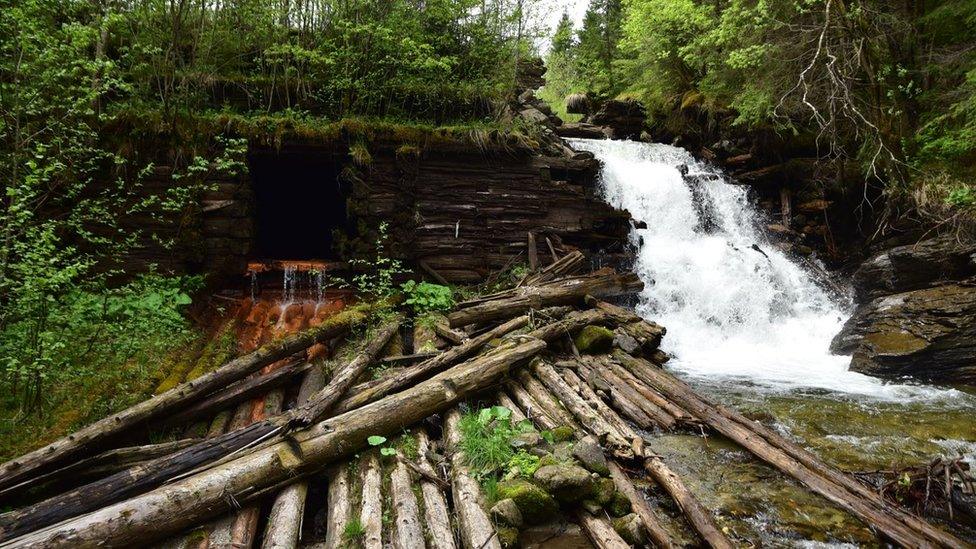Wildlife: Why are dams being removed across Europe?
- Published
- comments

Last year Bowston Weir on the river Kent was removed to encourage more fish to gather
There has been a record number of river barriers removed across Europe according to a new report.
Dam Removal Europe, a collection of seven organisations including The World Wildlife Fund (WWF) and The Rivers Trust, said at least 325 barriers were taken away across Europe.
Spain has 125 removals of barriers, which includes dams and weirs, while the UK completed 29 removals in total.
So why are so many dams being taken away?
What is a dam?
A dam is structure built across a river to hold water back, it can be used to store water, control flooding or make electricity.
A weir is similar to a dam but it is a lot lower.
Dam Removal Europe says dams "disrupt the natural functioning of rivers " which can cause decline of fish and other wildlife.
What is the problem with dams?

Fish like this Atlantic salmon need free-flowing water to be able to move between feeding and breeding areas of the river
Rivers that flow freely are important for biodiversity.
Dams which block rivers stop fish from travelling freely between feeding and breeding areas, this affects the life cycle of many fish.
In turn this has an effect on other wildlife.
Fish are food for animals like otters and birds.
Dams are not always bad - in some places in the UK beavers have been introduced because their natural dams help stop flooding, create pools and filter water.
Hydropower dams generate renewable energy from water and many are now being built with systems in place to try and keep the fish migration routes going.
There is an estimated 150,000 old and unused dams and weirs across Europe.
Restoring at least 25,000 km of rivers to a free-flowing rivers is one of the aims of The European Union Biodiversity Strategy for 2030.
What dams have been removed across Europe?

The bandoned Bayurivka dam in Ukraine before it was removed
Here are some of the dams and weirs included in the 325 removed across Europe.
Bowston Weir, UK - This 19th Century barrier in the Lake District was dismantled to give fish and other aquatic creatures more migratory routes and to boost fish stocks. The weir was originally built as part of a mill, but the mill was dismantled in the 1960s and the weir no longer had a use. The river Kent is home to white-clawed crayfish and freshwater pearl mussels.
La Roche qui Boit and Vezins, France - The biggest project of the year, these is a huge hydroelectric dam on the river Sélune. The 36m high Vezins and 16m high La Roche Qui Boit dams were finally removed in June 2022. It's hoped that the removal of the dams will improve the population of the Atlantic salmon in the river.
Bayurivka dam, Ukraine - Despite the ongoing war in Ukraine, WWF_Ukraine is still continuing with river restoration work. In August 2022, the unused and abandoned Bayurika dam on the Perkalaba river close to Ukraine's western border with Romania was dismantled. It's hoped the new free-flowing river will boost the populations of fish such as endangered Danube salmon, brown trout and Ukrainian brook lamprey.
